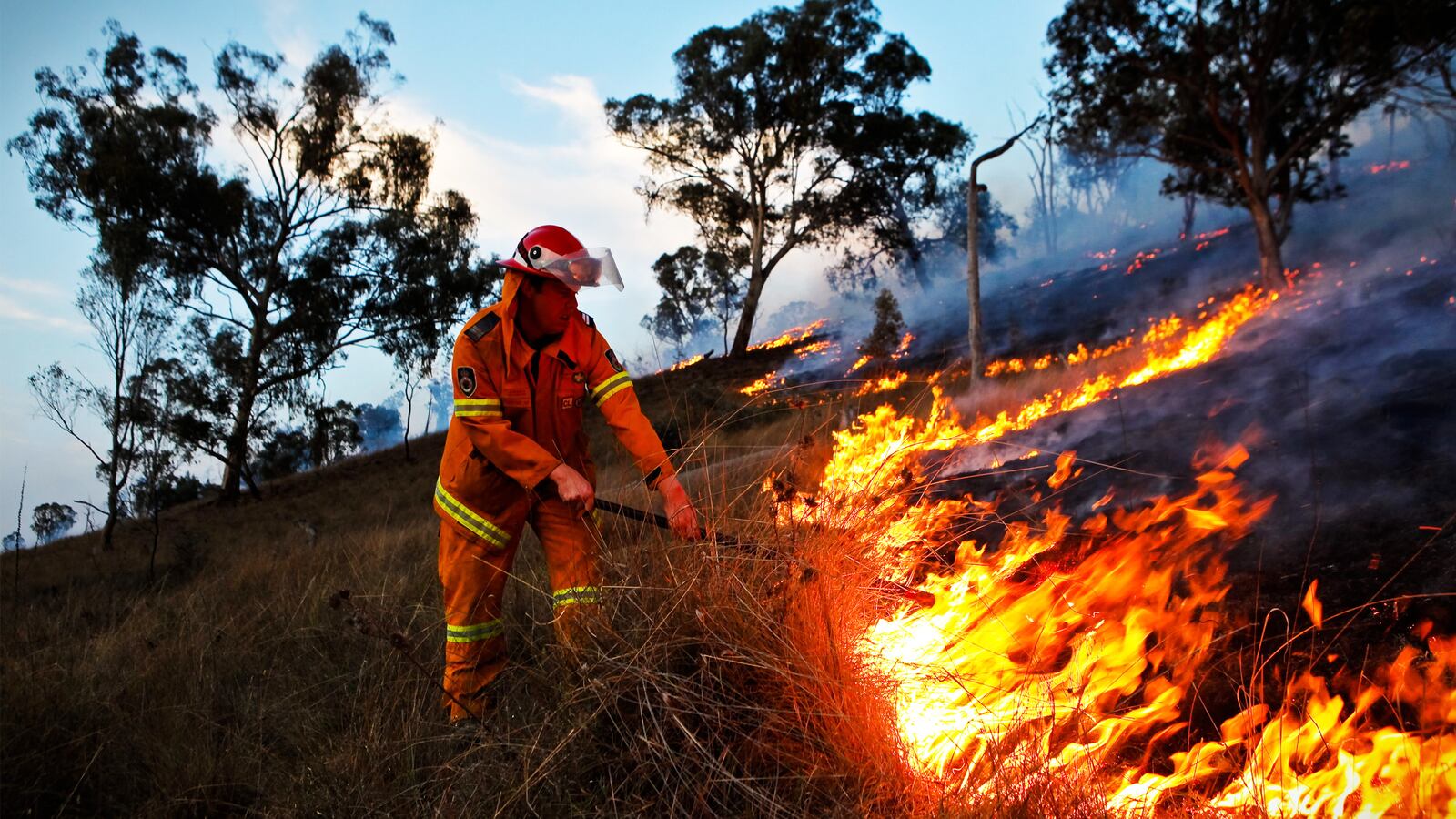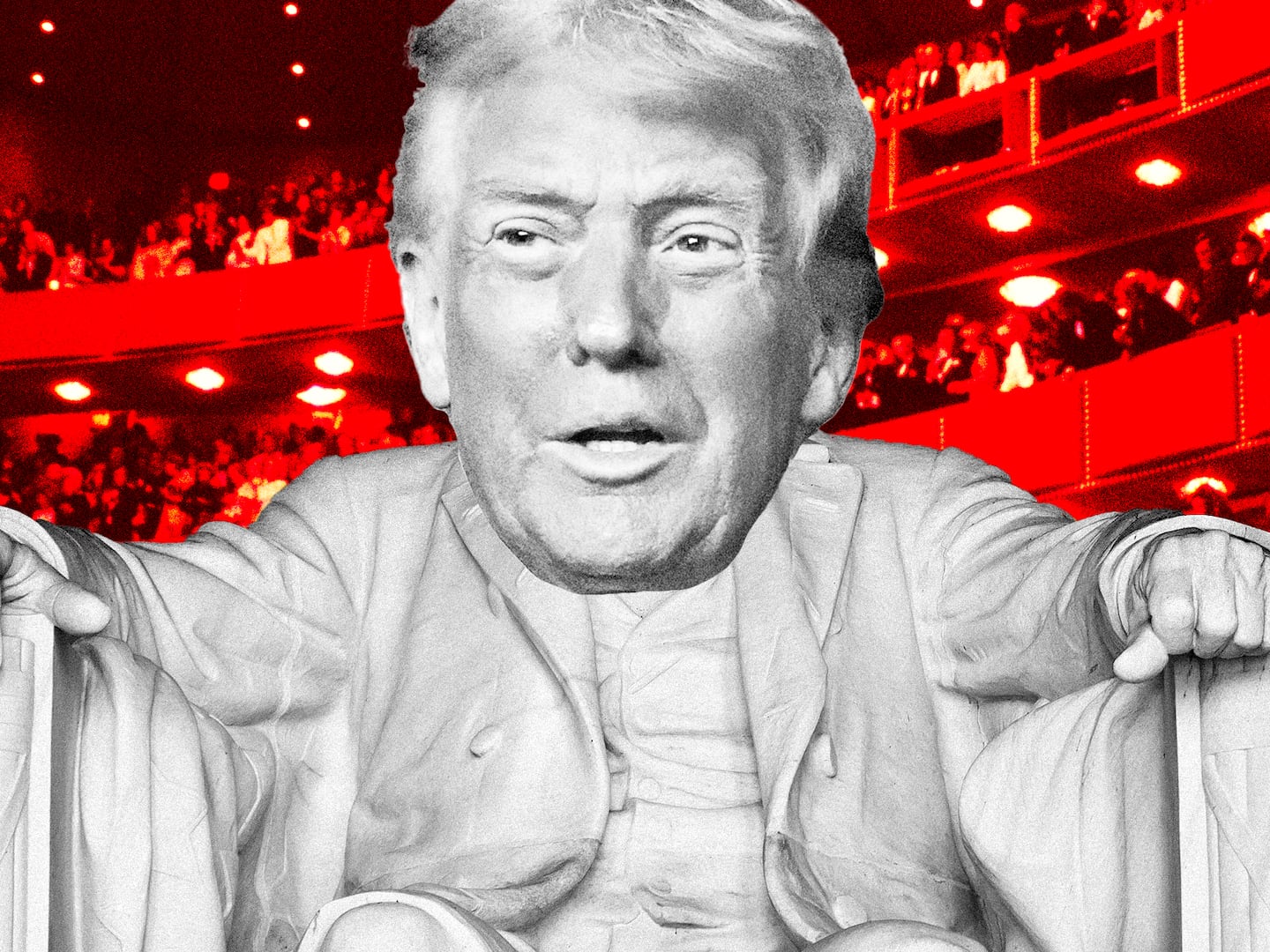From the air, all Detective Adam Henry could see was black. Scorched earth in every direction. It was February 10, 2009. Three days earlier the worst wildfires in Australian living memory had raged across the southern state of Victoria, killing 173 people and razing 1,100,000 acres. In a police helicopter, Henry, from the Arson and Explosives Squad, sat beside a crime scene photographer as they flew low over dead wildlife and farm animals, the surviving livestock wandering the debris-stricken roads, eating any vestiges of green.
This fire, in the state’s southeast, had begun on the edge of a eucalypt plantation before spreading for miles through farmland and forest. It appeared to have been deliberately lit.
The detective directed the photographer to each rectangle of burned land that needed documenting.
Some of the houses where there were fatalities looked to have been peeled. A roof skinned off one place revealed a blueprint of ash. The spaces in which a family had slept, ate, and washed were demarcated in black and white. From one angle, the rooms may have been the chambers of the heart. It was a mental exercise to see all this horror and not keep asking, almost as a tic: Why? Who?
He’d been trained to think of motivation first—why someone had done something, before who that someone was. So, was this a vendetta? Was it random? Did the arsonist live nearby? Or did someone whom the arsonist was targeting? Was it an act of revenge? And why the plantation? Two fires, three hundred feet apart, had been lit. The eucalyptus oil, working as propellent, meant the blazes soon combined, creating a monster. Was it for the thrill, the power? Was it psychosis?
Detective Henry knew that in Australia only 1 percent of bushfire arsonists were ever caught. As a result, fire-setting was a crime of which even the Arson Squad understood comparatively little.
In the mid-twentieth century, pyromania was defined according to the 1839 Treatise on the Medical Jurisprudence of Insanity to be “a morbid propensity to incendiarism, where the mind, though otherwise sound is borne on by an invisible power to the commission of this crime that is now generally recognised as a distinct form of insanity.”
However, over the 75-year history of the mental health bible, The Diagnostic and Statistical Manual of Mental Disorder (DSM), the classification of pyromania had fallen in and out of fashion and different editions’ pages. Today, of the multitude of people who deliberately light fires, only a scarce few are considered to have the pyromaniac’s all-consuming “fascination in, curiosity about and attraction to fire” teamed with “pleasure and relief when setting fires.” The behavior is now believed to be better accounted for by the DSM’s section on disruptive impulse control and conduct disorders. An individual’s tilt towards the antisocial and a mad lack of restraint.
Through the years, various agencies have tried to establish criteria for profiling fire-setters. But most international studies focus on the deliberate ignition of houses, cars, and buildings, rather than wildfire arson, the scale of which is difficult to calculate, (although in the United States, the Department of Agriculture and the National Institute of Standards and Technology estimate that half a million wildfires are deliberately lit annually, causing an estimated $3 billion in damages.)
Like the West Coast of the United States, Southern Australia is one of the most fire-prone places on the planet. Indigenous Australians managed this pyrophile ecology to their own advantage. But among European settlers the fire-craving Australian trees created a sub-community of destructive arsonists. For generations this had been a kind of open secret. In many country towns there was someone who seemed to go on a spree each summer, just as the north winds blew in from the central Australian desert. Fifty percent of the country’s vegetation fires were deemed maliciously or suspiciously lit. And the area the helicopter was flying over, called the Latrobe Valley, was designated a “hot-zone” due to the very high rate of deliberately lit fires.
Every time the helicopter changed direction, the detective saw the silhouette of one or more of the Valley’s massive coal-fired power stations rising from the ground. This region had the largest brown coal fields in the world, but not much of the profit made it back to the community. Lives affected by high levels of unemployment, intergenerational welfare dependency, child abuse, and neglect were lived in small towns right on the margins of eucalypt forest. The result was sometimes combustion. Two summers earlier, for instance, a 29-year-old woman and her 15-year-old son had been caught lighting fires together on a bush road while her other six children waited in the car.
Detective Adam Henry knew the basic hypotheses of the FBI and various other profiling systems and was conscious some were fairly complicated. One prominent model used this equation to explain the behavior: FIRE-SETTING = G1 + G2 + E, WHERE [E = C + CF + D1 + D2 + D3 + F1 + F2 + F3 + REX + RIN].
What the sum tended to find was that fire-setters were more often than not male; they were commonly unemployed, or had a complicated work history; they were likely to have disadvantaged social backgrounds, often with a history of pathology, addiction, and physical abuse; and many exhibited poor social or interpersonal skills. It was a plausible profile, but hardly different from that of many non-firesetting criminals. In other words, wildfire arson was not some exotic crime; it emerged from the same set of dysfunction and disadvantage as most other felonies. And also, in a region like this, the equation described a high proportion of the community.
Five days after the fire, Detective Henry and two colleagues from the arson squad drove into a small coal town close to where the fire had been lit to arrest a 39-year-old man named Brendan Sokaluk.
Sokaluk, who was pushing a pram full of newspapers, was mid-way through his paper round. He supplemented his disability pension by delivering this local newspaper, for five cents per copy, and by collecting scrap metal. He’d scavenge at tips and unofficial dumping grounds for trash he’d haul back home, and what he couldn’t sell he’d sometimes burn. His neighbors later reported they’d hear him listening to episodes of Bob the Builder or Thomas the Tank Engine amidst choking, toxic smoke.
“I didn’t light any fires,” he told the detectives who’d come for him.
Back at the regional police headquarters, the arson squad prepared their interview questions. Sokaluk had called to report the fire to emergency services within minutes of its ignition, and he’d hung around in the melee as fire fighters tried desperately to evacuate those living nearby. A few days later he’d then electronically submitted a false report to Crime Stoppers claiming to have seen “a bad man” lighting the fire.
As a 19-year-old, he told Detective Henry, he’d been a volunteer firefighter himself, before being “picked on” and made to leave. This interested the detective. Although statistically it’s uncommon for firefighters to deliberately set fires, it is common for arsonists to be firefighters. In small Australian towns, volunteering to battle local blazes offers camaraderie and status. It’s a bonding, adrenaline-filled service for which politicians and the media turn some of those in the ranks into heroes. In this case though, perhaps being rejected from the local firefighting association had spawned a fatal grudge.
Sokaluk made a partial confession. He claimed to have dropped cigarette ash that started a fire.
The next morning, he led the detectives to the place he claimed it had happened. A site near where the forensic chemists had located the fire’s origin.
Around him the eucalypts were charred, their canopies the color of rust.
“It was green at the time,” he said matter-of-factly. “Not green anymore. All burnt now.”
Later that day, Sokaluk was put in a police van and driven from the Latrobe Valley to Melbourne’s Assessment Prison, not least for his own protection. The fire he appeared to have lit was still burning behind him, and the community wanted vengeance. As the van left his hometown, it passed Hazelwood Power Station, the dirtiest coal-fired power plant in the OECD. From the row of 450-foot chimney towers came barely regulated carbon emissions. This thin brown smoke perhaps working in tandem with this strange man to remake the world with fire.
Excerpted from The Arsonist by Chloe Hooper, printed with permission of Seven Stories Press.






